
While in the Imperial era the upbringing and education of children were predominantly left to the family, that all changed in the Soviet period. The Communist authorities took charge of these matters. From the point of view of the new regime, it was particularly pertinent in an atmosphere of deep division in society.
People with revolutionary and counter-revolutionary views could be found in the same family. It was considered important to inculcate the ‘correct’ world view in children, independently of the world view of their parents.
Also, the level of education of the vast majority of the country's population was low, so it was important to take children out of their habitual environment and provide a means of social mobility for them. After all, children were the future builders of Communism.
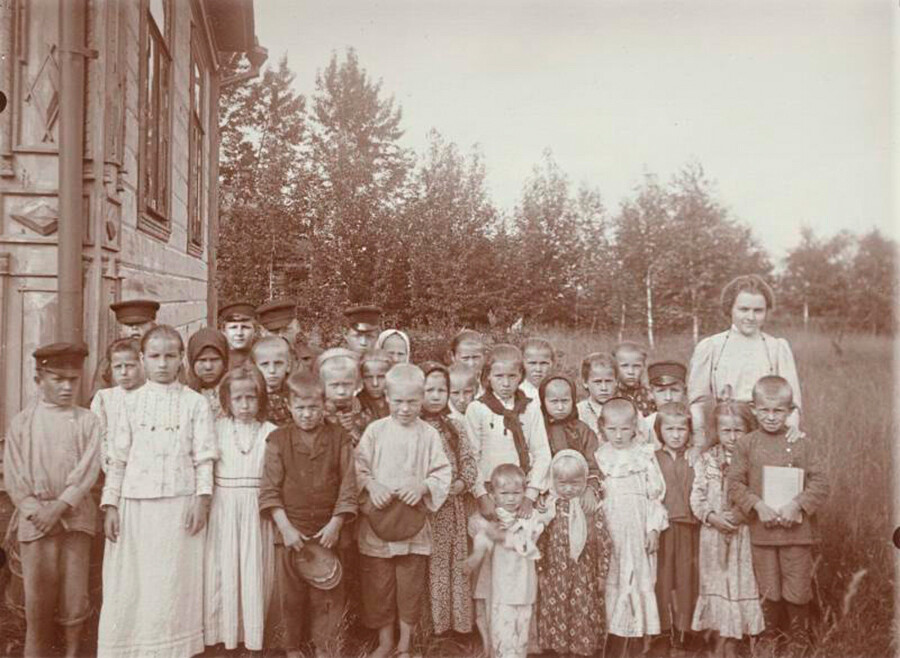
Students of a rural school, 1900s
MAMM/MDF/Russia in PhotoBefore the 1917 Revolution, bringing up children was primarily the responsibility of the family. Parents had to decide whether to give their child a home education or send them to school. In the countryside, where families had many children, the older ones often parented their younger siblings and looked after them. Moreover, from an early age everyone was working in the fields and caring for livestock.
Poor parents could "hire out" their children - for example, as apprentices to an artisan. Essentially, this meant servitude. Numerous such examples are described in Russian literature ('In the World' by Maxim Gorky or 'Vanka' by Anton Chekhov).
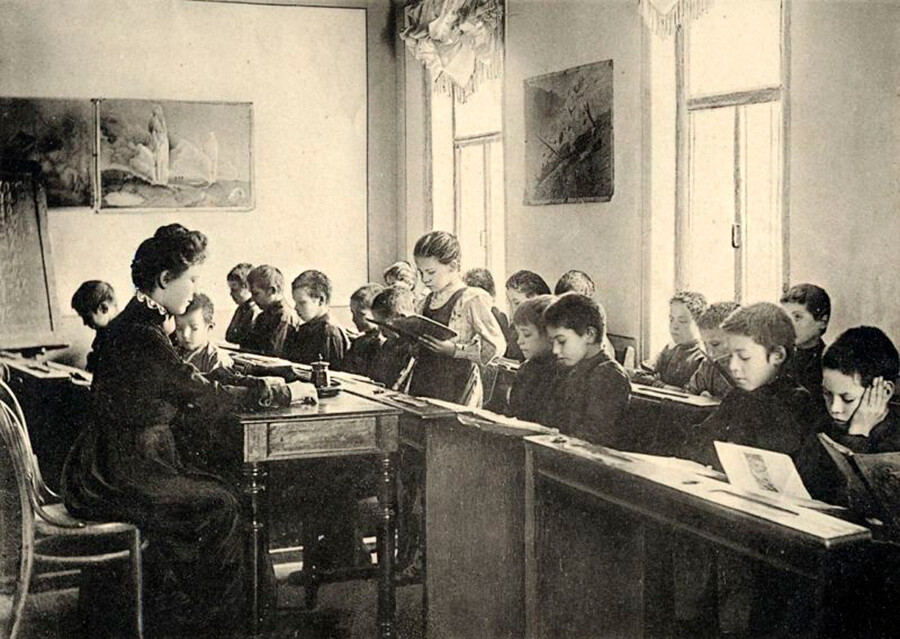
A school in Samara, 1900s
Samara Region Art Museum/Russia in PhotoThere was no compulsory school education in the Russian Empire, although discussion of the need to introduce it had been widespread ever since the 1880s.
There were many schools, and new ones appeared all the time, but the responsibility for organizing the educational process (and most of the costs) rested with individual regions - the districts and provinces. Each approached the matter in their own way and there was no single system of inspection. There was no uniform school curriculum either and each teacher, depending on their experience and qualifications, decided for themselves what to teach and how to teach it.
For the first time in Russian history, the state took it upon itself to tackle the problem of the universal rearing and education of children. How and under what conditions a child grew up ceased to be a family matter and became the responsibility of the state. After all, the aim was to raise new members of Soviet society who could build a powerful and thriving Communist society. The ‘correct’ values had to be inculcated in children, who needed to be healthy, well-educated and eventually able to work for the common good.

Students on a break. Exemplary School No. 9 in Moscow, 1930
Emmanuil Yevzerikhin/MAMM/MDF/Russia in PhotoThe Soviet government regulated a child's life from its very first days, and even earlier - after all, the USSR was the first country in the world to introduce maternity leave. The employer paid a woman an allowance before and after childbirth; while, at the same time, allowing her to take time off work so as not to harm her health or her baby’s.
After the baby was one or two months – the period varied at different times, and in the late 1960s it was set at one year – a woman returned to work, where she was entitled to a break every three hours to feed her baby. There were day nurseries at factories so that nursing mothers could briefly leave the shop floor to go and feed their child; women were given a warm drink with milk and food before each feed. At the time, these conditions were seen as very favorable for a working woman because in the Imperial era she had to leave her job after giving birth even if that meant total destitution.
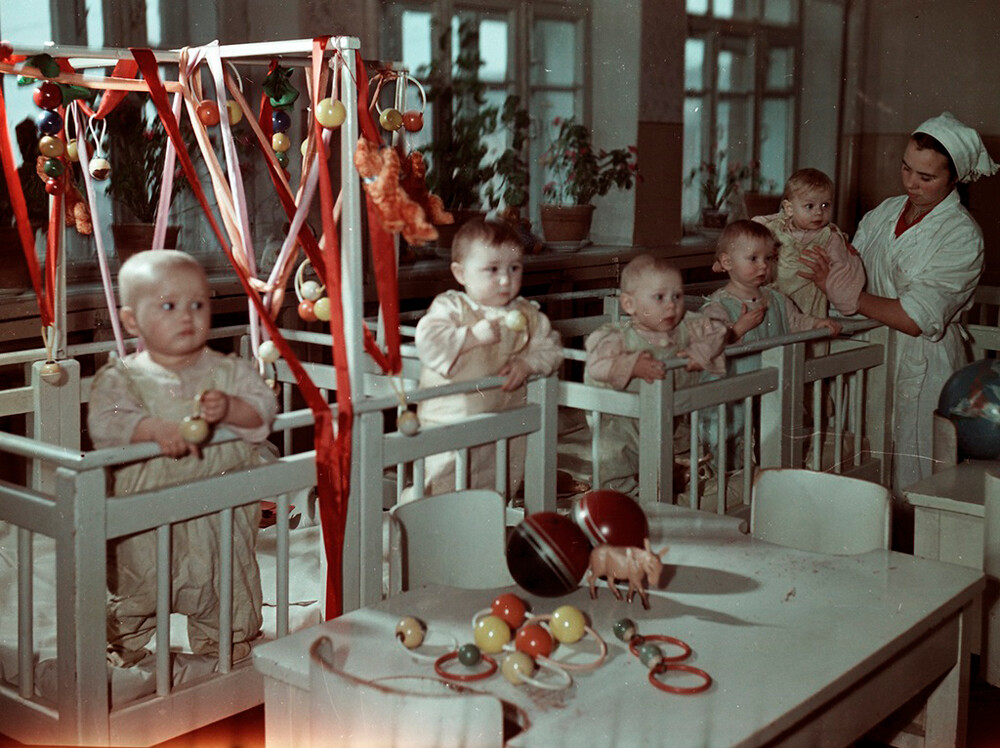
A nursery of a fine-cloths factory, 1956
Valentin Khukhlayev/Valentin Khukhlayev's archive/Lumiere GalleryState propaganda also actively disseminated information about how to look after a baby and keep it healthy, as well as the proper hygiene procedures to follow. This was how the Soviet authorities combated child mortality and also prevented the outbreak of various diseases (of babies as well as mothers).
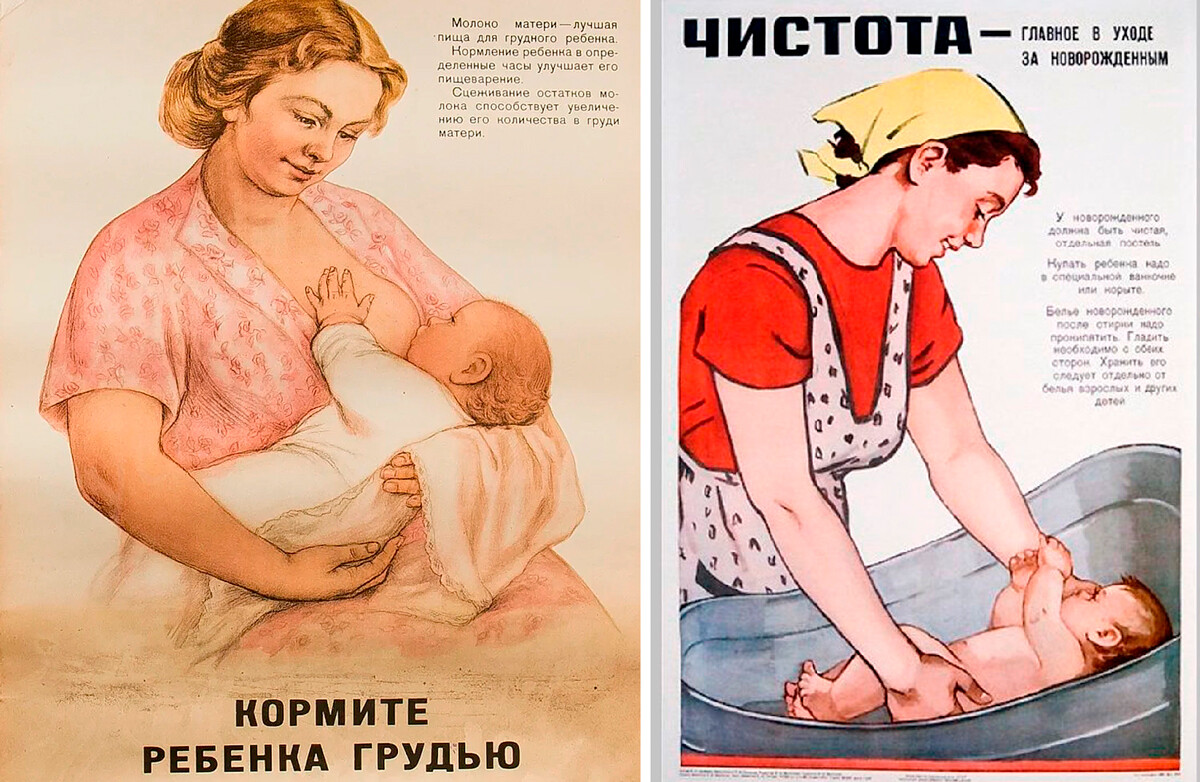
Posters explaining importance of breastfeeding and bathing a baby
Public DomainAfter daytime nursery, at the age of three, a child was sent to a kindergarten free of charge and, from the age of six, to a regular school. One year after the Revolution, in 1918 a law was passed for the first time in Russian history mandating compulsory and free education for children. Parents who failed to send their children to school could expect to be penalized, up to and including the removal of the child by social services.
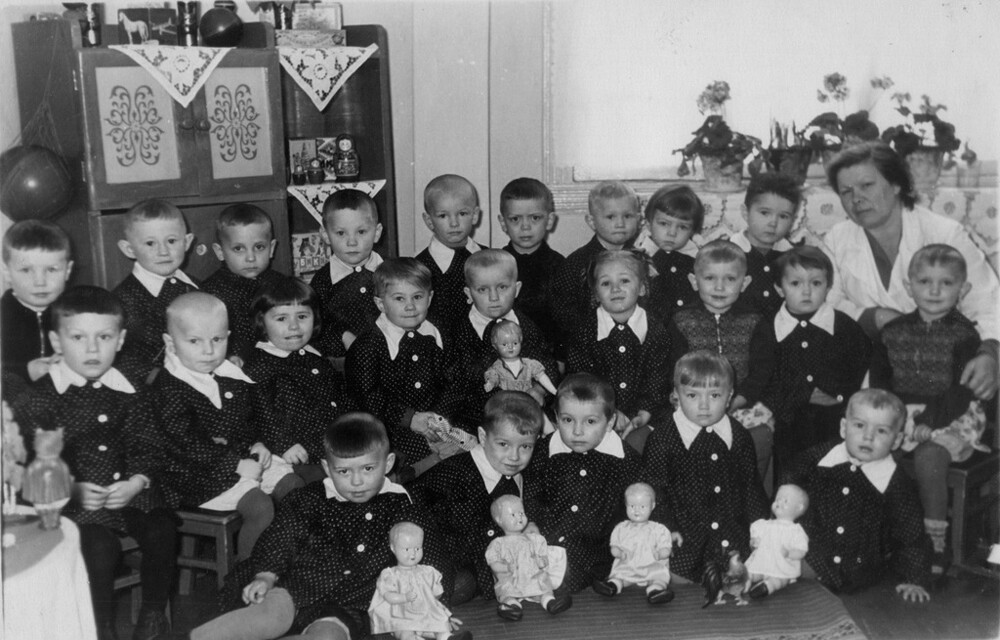
Kindergarten in Arkhangelsk, 1956
Russia in PhotoSoviet authorities sought to give each child the most relevant knowledge to enable them to become full-fledged and productive members of society. In the Imperial era, only the children of affluent parents were able to receive a proper education and make an excellent career. Soviet power created an infrastructure that allowed even the children of ordinary workers and peasants to receive, if they wanted, a fine education and to become successful; for instance, after Lenin all Soviet rulers arose "from the people" and not from the elite.
In the Imperial era, concern for homeless children was haphazard in nature. Yes, orphanages operated - sometimes with state funding, and sometimes with money provided by private benefactors. For the most part, however, caring for orphans was a major responsibility of the Orthodox Church in line with the teachings of the Bible. In the villages, though, orphans were often cared for by relatives.
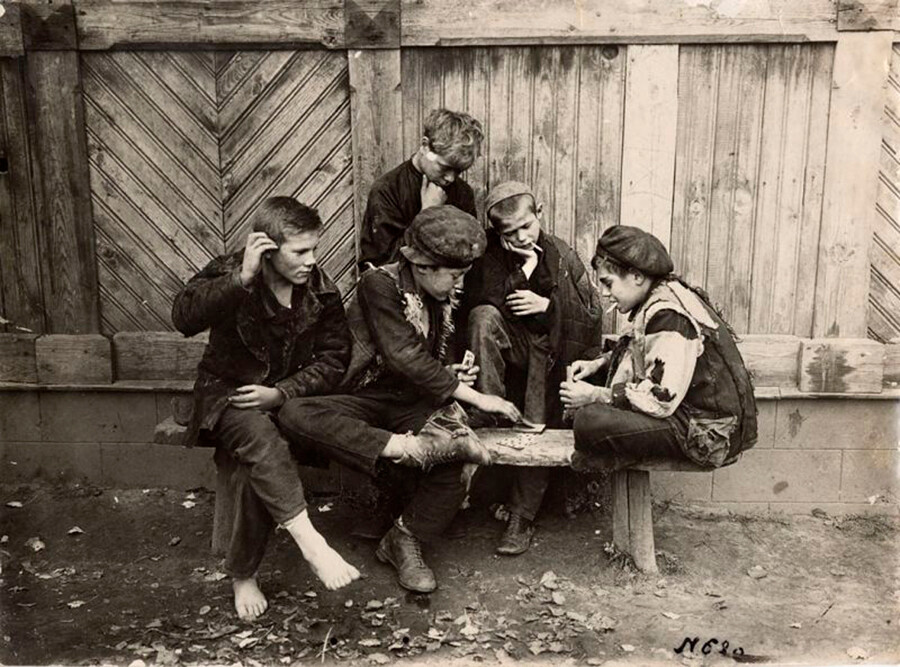
Homeless children, 1920s
Murom Art and History MuseumFollowing World War I and particularly the Russian Civil War, many children lost their parents, and, according to official statistics, there were approximately seven million homeless children (with only around 30,000 in orphanages). Many children literally grew up "in the streets", thieving and begging and, in the longer term, becoming hardened criminals.
The state took the problem of homeless children fully under its control. Soviet authorities needed to gather and register these children, and provide them with food, shelter and clothing. A special Children's Commission was formed, and a large number of orphanages and reformatory schools were opened.
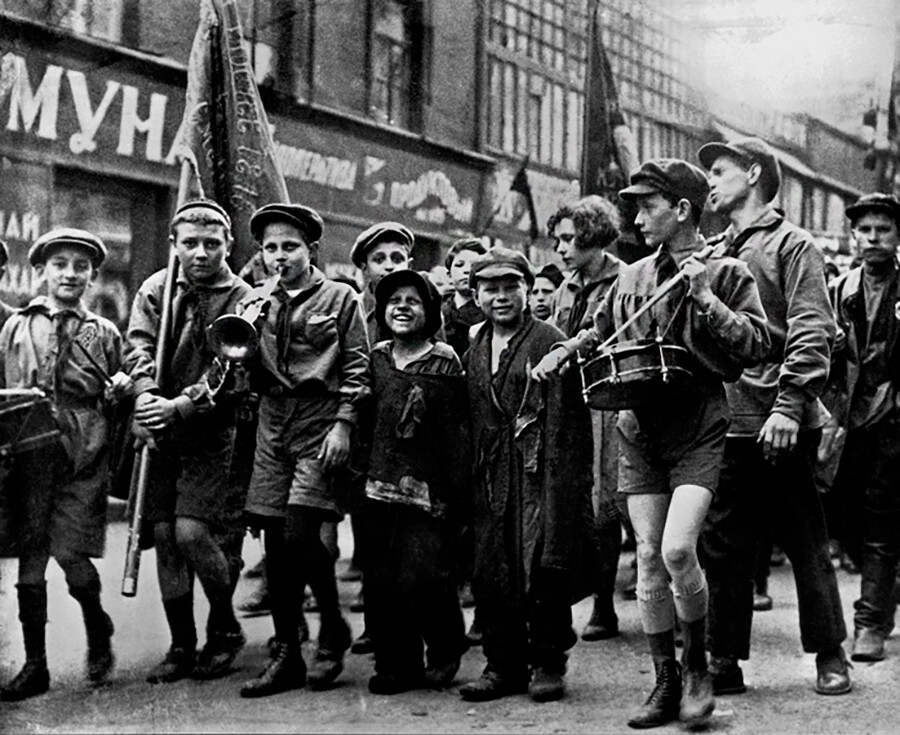
Pioneers and homeless children attend the Labor Day demonstration, 1927
Boris Ignatovich/MAMM/MDF/Russia in PhotoSpecial task forces worked at railway terminals and on trains, from where homeless children were literally grabbed and taken for delousing, fed and sent to an orphanage. By 1924, the orphanage population had risen to 280,000.
The Soviet period saw the emergence of new educational theorists, whose job it was to devise a new education system virtually from scratch. Among these, Anton Makarenko was particularly celebrated. Using a colony for young offenders as a pilot study, he developed a system of rehabilitation of difficult children, which he proposed should also be introduced at mainstream educational establishments. Makarenko set out his principles in "The Pedagogical Poem", and in Russia his name became as famous and as much of a household term as Montessori is today.
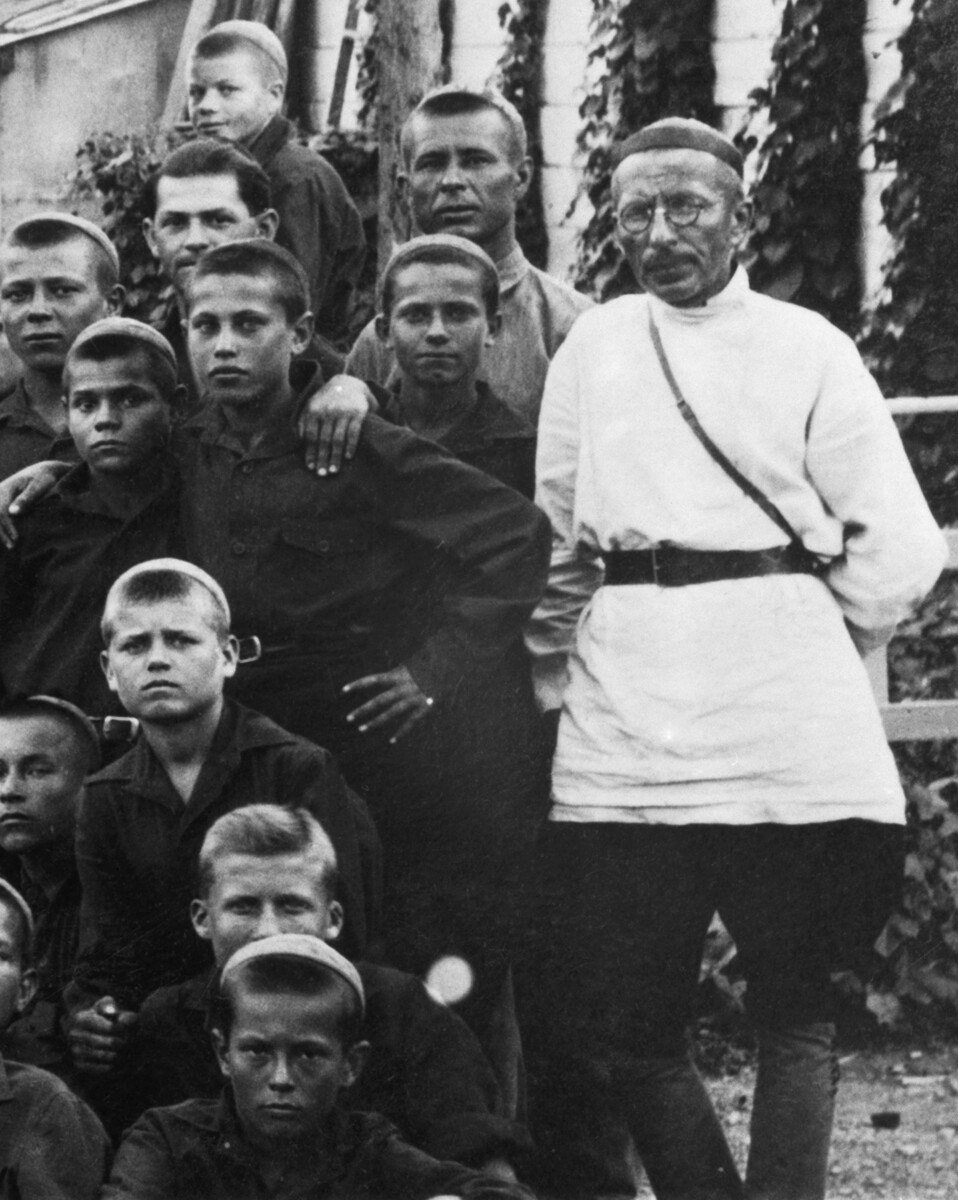
Anton Makarenko with his commune school students on summer vacation in Yalta, 1930
TASSWhereas Imperial era schools gave the teacher authoritarian control over the pupils, Makarenko's basic principle was to enlist children in a "common cause" (for instance easy tasks such as tidying the classroom), and to engage them in the idea that everyone is responsible for themselves and also for each other.
A child's energy was thus channeled towards the collective good and they felt themselves important and needed. In addition, Makarenko espoused the principles of "democracy" in the school environment - each child could have their say, children could hold collective meetings, they could elect a class representative, and they could take newcomers and juniors under their wing. At the same time, he made sure discipline was observed and did not shrink from punishments for offenders and troublemakers.
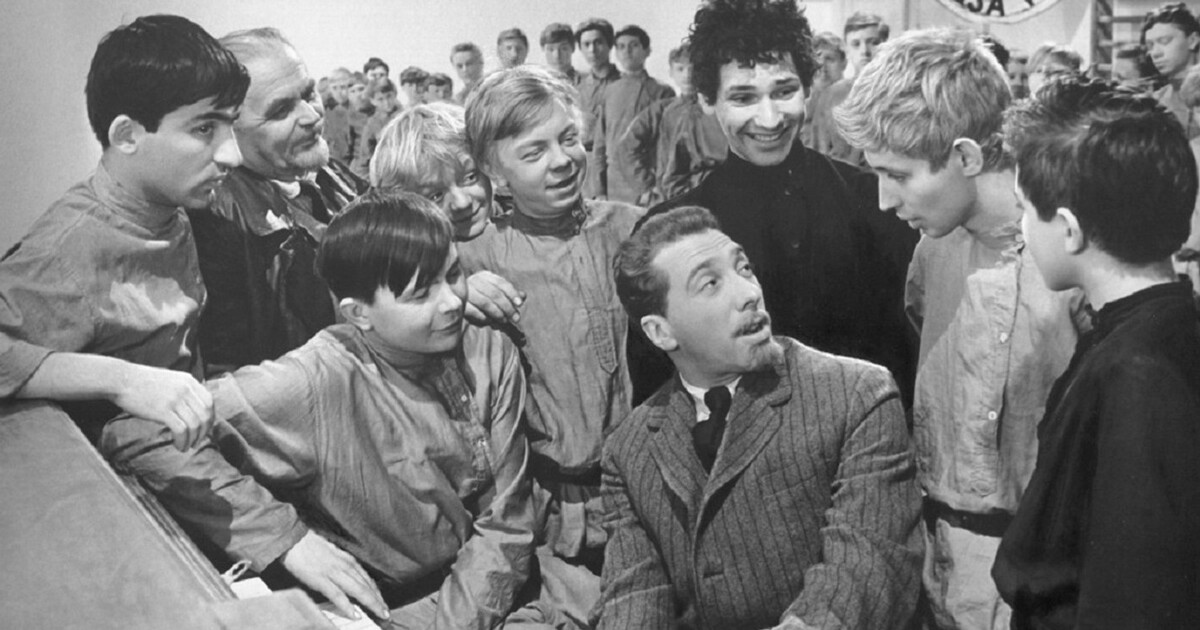
A still from 'The Republic of ShKID' movie
Gennady Poloka/Lenfilm, 1966The Soviet educator Viktor Soroka-Rosinsky also advocated the principles of democracy, self-reliance and even self-management. He set up a commune-type school for difficult children, naming it after F. M. Dostoevsky, which became celebrated after its alumni, Grigory Belykh and L. Panteleyev, wrote the cult classic 'Republic of ShKID'. The eponymous Soviet movie version had no less of a cult following.
The Soviet education system was fully in place by the late 1920s. The principal inspirational force and brains behind it was Nadezhda Krupskaya, Lenin's wife and deputy people's commissar for education.
"Schools should not only teach but they should be a center of Communist upbringing," she believed. Education should thus "influence the younger generation with the aim of obtaining a certain type of person". Krupskaya was in disagreement with certain methods of Makarenko and other educational theorists, but also espoused such principles as self-management and the mentoring of pupils by other pupils.
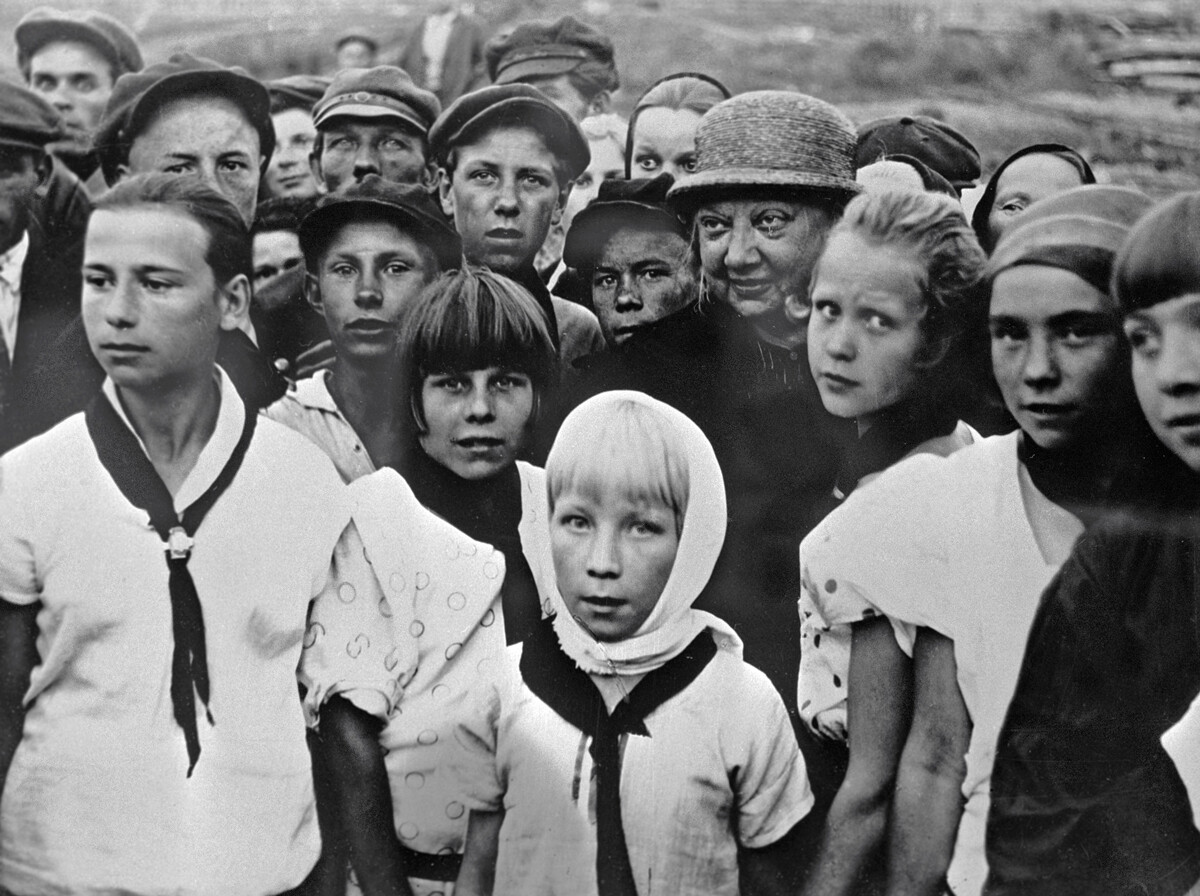
Nadezhda Krupskaya and pioneers, 1927
SputnikIn 1922, Krupskaya played a key role in the establishment of the Pioneer Organization for children, which grew out of the Russian Scout Movement that was founded in 1908 during the reign of Nicholas II. The important difference, however, is that although it resembled the Scouts in form, the Pioneer Movement was Communist in content.
Young Pioneers were educated in a spirit of "devotion to the Soviet Motherland, proletarian and Socialist internationalism, a conscientious attitude to work and public property, and the acquisition of spiritual culture, and uncompromising opposition to everything that was alien to the Socialist way of life".
All schoolchildren joined the Pioneer Organization en masse from the age of 10. In essence, the Pioneer Organization inculcated moral and ethical values in children – something that before the Revolution had been the remit of the Church – to study conscientiously, to be honest and hardworking and to respect one's elders. A spirit of comradeship and mutual help was actively promoted. Better-performing pupils were expected to help weaker ones.
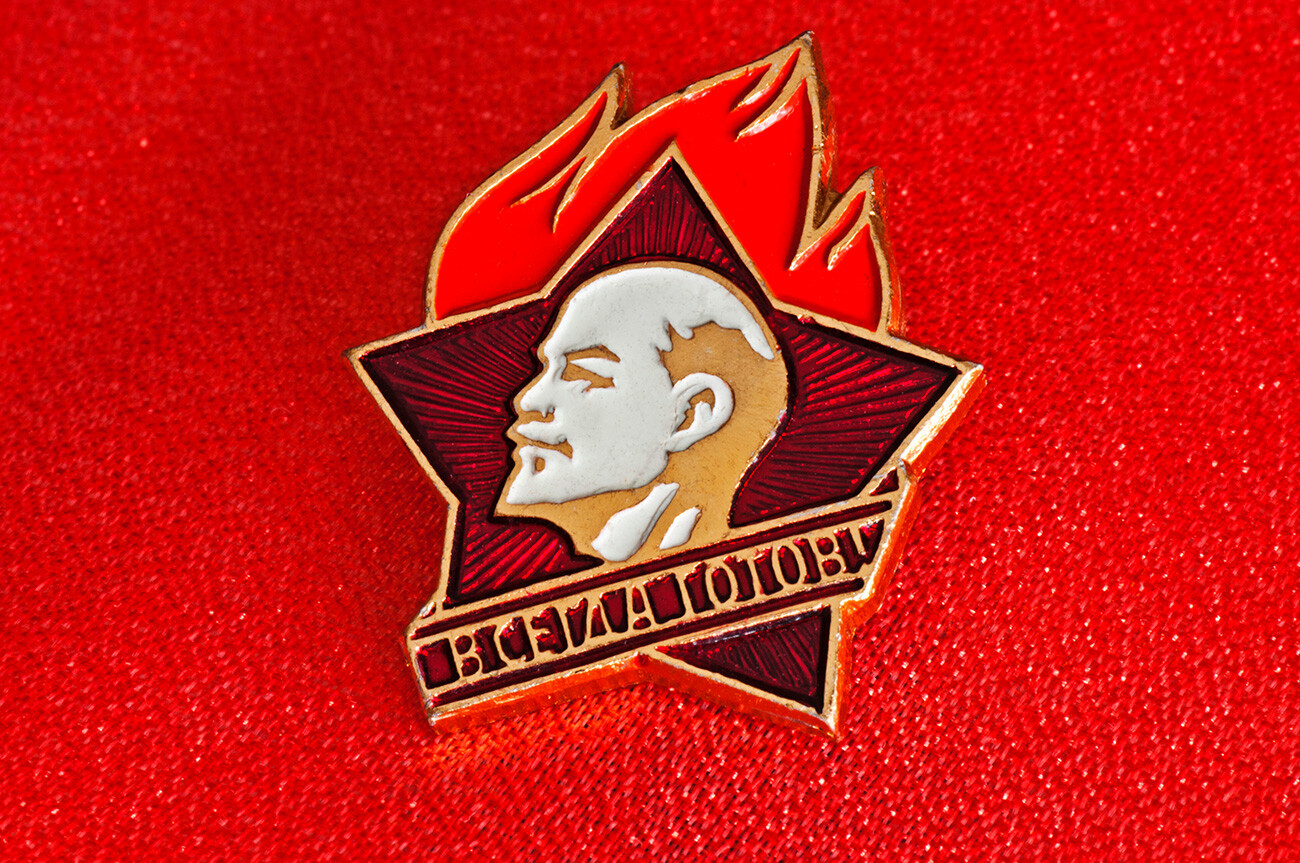
Pioneer pin featuring Lenin's portrait and the “Always Ready” motto
Legion MediaPioneers also took responsibility for helping the elderly or the lonely, collected paper for recycling and played an active part in the life of the country. The "icon" and principal symbol of the entire Pioneer Movement (apart from the red neck scarf) was Vladimir Lenin. The Pioneers paraded with his portraits, laid flowers at monuments to him and even formed honor guards at the Lenin Museum.
Finally, it might be added that prior to joining the Pioneers, children at the age of seven were initiated into the Little Octobrists and presented with a badge depicting Vladimir Lenin as a child. The motto of the Pioneers was "Always Prepared!" - which indicated their task to struggle for the cause of the Communist Party of the USSR.
Dear readers,
Our website and social media accounts are under threat of being restricted or banned, due to the current circumstances. So, to keep up with our latest content, simply do the following:
If using any of Russia Beyond's content, partly or in full, always provide an active hyperlink to the original material.
Subscribe
to our newsletter!
Get the week's best stories straight to your inbox